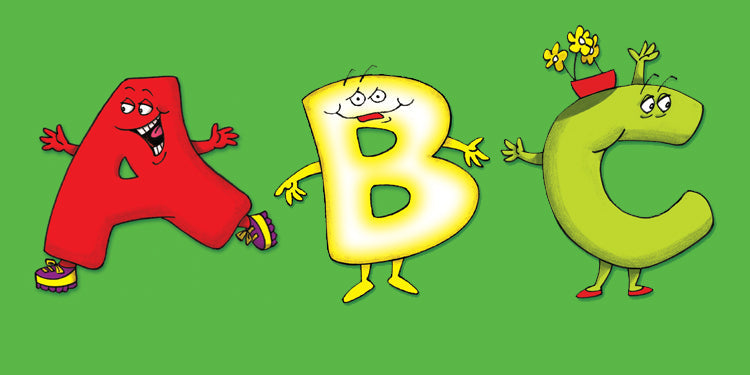 This is the eighth of a progressive series of posts that we will be featuring on the Hameray Blog every Thursday for 10 weeks (for the other posts,
click here
). It's authored by special guest blogger Paula Dugger, who is an educational consultant with a rich-literacy background that includes serving as a Reading Recovery Teacher/Teacher Leader, first grade teacher, Title I and high school reading teacher, as well as a Reading Coordinator. Hameray is thrilled to be able to share with you Paula's classroom-tested ideas and experience in helping young learners achieve their early literacy goals.
This is the eighth of a progressive series of posts that we will be featuring on the Hameray Blog every Thursday for 10 weeks (for the other posts,
click here
). It's authored by special guest blogger Paula Dugger, who is an educational consultant with a rich-literacy background that includes serving as a Reading Recovery Teacher/Teacher Leader, first grade teacher, Title I and high school reading teacher, as well as a Reading Coordinator. Hameray is thrilled to be able to share with you Paula's classroom-tested ideas and experience in helping young learners achieve their early literacy goals.
Magnetic Letters and Cognitive Development
Activities using magnetic letters can help in cognitive development both consciously and unconsciously in young children. The letters are colorful, three-dimensional, and they lend themselves to movement and touch. Letters are a part of the print we see around us in the world. Using soft foam letters (Hameray offers a great set of uppercase and lowercase foam letters), children can learn many skills:
-To categorize by sorting, matching, and classifying
-To differentiate colors, shapes, and letters
-The concept of letters by name, sight, shape, and sound
-The concept of words by sight or by putting together sounds to form words
As previously mentioned, my series of guest blogs is on specific activities that use magnetic letters to help with the cognitive development of preschoolers. No activity should exceed five to ten minutes depending upon the age, ability, and interest of the child. These activities should be seen as fun games, and each will be a little more rigorous than the one before. The blogs will be divided into four groups:
-Teaching colors
-Teaching similarities and differences (or comparing and contrasting)
-Teaching the alphabet (letter names)
-Word analysis (making words)
Teaching the Alphabet by Name
There are many ways in which a child will need to know and recognize the letters of the alphabet. Knowing the letters by name and being able to match the lower case with the upper case forms is the subject of this post and last week's. Whenever introducing a task, make sure the child understands what s/he is to do. A great framework is listed below that demonstrates how to scaffold an activity by modeling and gradually releasing the activity to the child.

Materials used in this Activity: Foam Magnetic Letters and Magnetic Whiteboard

Activity #8: Identifying and Naming Letters
Once the child can easily recognize most letters, there are several activities that will help reinforce that knowledge as well as let the parent/teacher in on any confusions or unknowns the child might have. Quick identification of each letter by name is the ultimate goal of this activity.

Place five to ten different letters out for the child to see.



Then say, “Find a t / T . Find a b / B . Find a y / Y ” and so on until all have been identified. If any are identified incorrectly, you can say “Good try, but that is a ____, etc.” If any are unclaimed, you can ask, “Do you know that one’s name?” (to see if the child has confusions and might be calling it something else).

To encourage competition, you might tell the child that all the correct ones will be in his/her pile and all the incorrect will be in your pile. The one with the most letters wins. It can be fun to keep score, as long as you stack the letters in favor of the child. Children like to win, thus a game will be a fun activity as well as learning experience.


To increase the rigor on this activity, once the child is able to identify most of the letters, place several and ask the child to quickly touch and name the letters. Again, all that are correct can be given in points to the child and any incorrect answers given to you will signal which letters the child still needs assistance with.


Once the letters can be identified by name, using caption-type alphabet books such as the Hameray Letter Buddies series will most likely help the child begin the journey into reading. Identifying each book by its letter name will reinforce the importance for learning letters that make up words that provide meaning in text.
This was the eighth activity in the series. If you'd like to see the other lessons, click here !
- Paula Dugger
~~~
Paula Dugger has a B.S., M.Ed., and Reading Specialist Certification from The University of Texas at Austin and Reading Recovery training through Texas Woman’s University. Paula does educational consulting and training through Dugger Educational Consulting, LLC and can be contacted at np.dugger@att.net
Paula and her husband Neil are parents to two wonderful daughters, Alicean and Ashley, two sons-in-law Kevin and Patrick, and grandparents to Carter. She also raises registered Texas Longhorns on the weekends. The longhorn cattle are featured in her first book published by Hameray Publishing Group, titled Longhorns .
If you'd like to order some magnetic foam letters to try out this activity for yourself, you can find them on the Hameray website. If you're teaching at this stage of literacy, you might also be interested in the Letter Buddies books. Click on the images below to see some key features of the series!















































![6 Fun and Easy Activities to Practice Sequencing [Grades K-1]](http://www.hameraypublishing.com/cdn/shop/articles/Red_Typographic_Announcement_Twitter_Post-5_bf1ae163-a998-4503-aa03-555b038d1b76_600x.png?v=1689961568)
![Leveraging Prior Knowledge Before Writing and Reading Practice [Grades 1–2]](http://www.hameraypublishing.com/cdn/shop/articles/Red_Typographic_Announcement_Twitter_Post-4_600x.png?v=1689961965)




